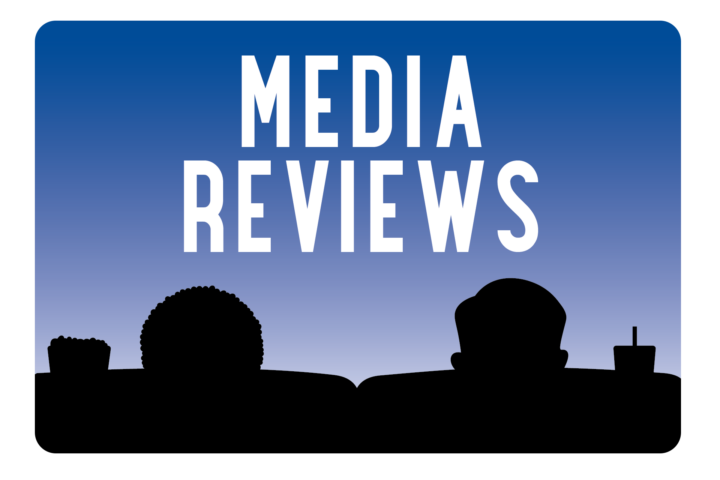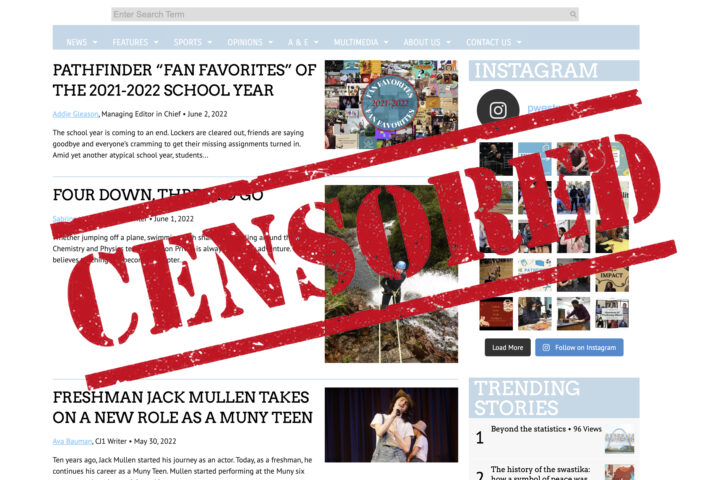This story is syndicated from The Black and White, the newspaper of Walt Whitman High School in Bethesda, MD. The original version ran in print.
Within minutes of Harry Styles posting a selfie on Instagram, tens of thousands of followers like, comment and share the post throughout their online community, the Harry Styles “fandom.” Any criticism of the content sends his fan base into a frenzy, escalating into threats and attacks.
The cycle is so typical that most social media users are desensitized to such extreme online reactions. This intense behavior is not limited to fans of any one celebrity, and its effects are not limited to the online sphere — the intense types of parasocial relationships fostered in today’s digital world pose a danger to both the safety of celebrities and the psychological well-being of obsessive fans.

The term “stan” comes from a 2000 Enimem single in which the rapper describes a series of dangerous encounters with an obsessed fan named Stan. “Stan culture” refers to the behavior of an extreme fan group that fixates on a celebrity or social media figure. While an average fan expresses their support for their favorite celebrity by engaging with their media projects and online accounts, stans take their admiration to a crazed level, often stalking the celebrity or harassing those who criticize the figure. Instead of dismissing stans as a normal part of broader internet culture, the online community must push to replace stan fandoms with spaces where thoughtful analysis of celebrity figures prevails over mindless mass support.
The ever-increasing influence of social media enables these extreme followers to come together and encourage one another’s behavior. Beyond what celebrities post themselves, the environments of apps like Instagram and X allow fans to collaborate to gather excessive personal details about their favorite celebrities, making it nearly impossible for public figures to keep details of their lives private. With overzealous admiration and unprecedented access to information, fans often form unhealthy “parasocial relationships” — intense, one-sided connections with a public figure.
“Celebrities make social media a personal thing, which makes it easy for impressionable users to form intimate connections with them,” said sophomore Juliana van der Wouden.
Excessive fan behavior can have detrimental impacts on one’s own mental development and socialization. A 2013 NIH study found that the intensity of a parasocial relationship is correlated with higher degrees of addiction to social network sites.
A wide variety of academic studies going back to the early years of the internet have found that excessive screen time and screen dependence can harm users’ mental health and can result in anxiety, depression and suicidal behavior. Sacrificing valuable time engaging with friends and family to build disingenuous connections with celebrities’ online personas impairs social development.
Stans’ emotional states depend heavily on the actions of the celebrities they follow, as they build an increasingly heavy dependence on public figures. For example, after members of the internationally renowned Korean pop group BTS enlisted in the military for their mandatory service, NPR found that many of their fans faced “enlistment depression” — feelings of melancholy and loss present across the fandom as if the fans had a tangible relationship with the group.
Stan groups’ tendency to involve themselves in the personal lives of social figures can cause fans to engage in toxic behavior. When Jennifer Hough accused rapper Nicki Minaj’s husband of sexual assault and alleged the couple had threatened her to remain quiet, Minaj’s fans bombarded Hough with death threats and doxxing attacks in an attempt to protect their favorite celebrity.
Additionally, die-hard fans of Justin Bieber’s former longtime girlfriend, singer Selena Gomez, and fans of Bieber’s current wife, model Hailey Bieber, have manufactured an imaginary feud between the two women and, in turn, their fandoms.
Celebrity stans also often make conjectures and accusations in relation to celebrities’ sexualities. Actor Kit Connor’s fans and followers incessantly pressured him to come out as bisexual after attacking him for “queerbaiting” — a practice in which a heterosexual individual hints at being queer to attract media attention and LGBTQ+ fans.
Another notable example of this phenomenon is the massive following of the “Larry” conspiracy theory, an ongoing fan theory that former One Direction band members Louis Tomlinson and Harry Styles were in a relationship during the band’s tenure. The theory remains a topic of hot debate in the fandom nearly 10 years after the band’s dissolution, despite the fact that both musical artists and the One Direction managers denied the claims.
Taylor Swift fans have also consistently used the “Gaylor” hashtag on Instagram and X to suggest that the heterosexual singer places queer themes in her music to come out discreetly — a myth that Swift has repeatedly attempted to shut down.
The Cleveland Clinic found that investing time into parasocial relationships with celebrities to extreme, invasive degrees can heighten pre-existing feelings of social anxiety or loneliness. Having one-sided online relationships with celebrities instead of creating tangible connections with others pulls stans away from reality.
“If you’re lonely in real life, parasocial relationships are a way to find something to take up your time,” junior Juliet Shandler said. “You’re putting aside your life to live vicariously through someone else.”
Stans may feel that their participation in a fan community impacts them positively by allowing them to build connections over shared interests, and immersing oneself in various fan groups can indeed help a person find their interests and even discover parts of their identity.
However, although participating in a fandom can be a social experience, the lack of variety in beliefs or opinions within these groups makes it difficult to broaden one’s understanding through interactions with other fans. Stans need to widen their perspectives on popular culture by engaging in groups in which people view celebrities with an analytical lens.
Fandoms that practice healthy celebrity criticism empower users to view the celebrity they follow more rationally, enabling fans to decide how they want to support a public figure based on their personal beliefs and values.
One example came following former Nickelodeon child actress Jennette McCurdy’s 2022 memoir “I’m Glad My Mom Died,” in which she exposed the abusive treatment she experienced at Nickelodeon over the course of her childhood and adolescence, prompting fans to reevaluate some of the shows they had grown up watching.
This reckoning amongst Nickelodeon fans pressured the company to take more accountability for problematic content and behavior in their shows and in production, and also played a role in inspiring the recent revelations about sexual abuse towards Nickelodeon child stars in the documentary “Quiet on Set: The Dark Side of Kids TV.”
In these healthier fandoms, fans can also effectively pressure social figures to become more aware of their social influence.
During the Black Lives Matter movement of 2020, countless celebrities faced pressure from fans and supporters to take a more prominent stance on racial justice and use their platform to promote social change. The online community must create and maintain these spaces for critical reflection to steer intense fans away from placing public figures on unrealistic pedestals and developing damaging relationships.
Underestimating the impacts of celebrity stan culture allows obsessive users to plunge deeper into their addictive habits, keeping them from genuine human connection and compromising their mental health. The internet can’t replace reality, and online figures can’t replace genuine relationships. The online community must stop allowing such damaging parasocial relationships to persist, and instead, communities must form spaces for thoughtful criticism of social figures.



